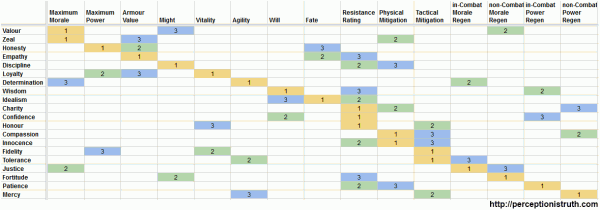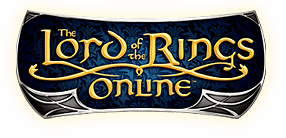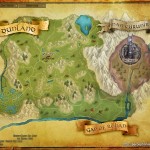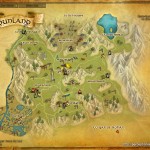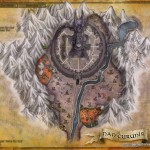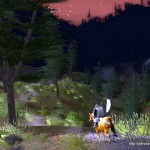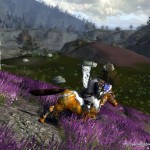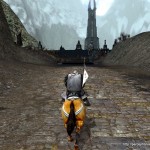This is my yearly round-up of ‘Genre’ movies coming out in the next year (this was the 2011 one). Genre is pretty loose and translates to ‘anything I thought sounded interesting’. It includes films that are already out in the other parts of the world but haven’t made it to the UK yet. Most of the info is gathered from a few web sites I hang out on, so it’s a really narrow subset of everything coming out but hey, watchya gonna do.
Oh, and it looks like Joseph Gordon-Levitt is officially in every movie in 2012. Or 3 of them anyway.
The Darkest Hour (January 2012)
http://www.imdb.com/title/tt1093357/
http://www.thedarkesthourisnear.com/
Alien invasion movie with a Russian slant (In Russia, Invaders Alien you!) Aliens travel across the universe using incredible amounts of energy in order to invade our tiny planet and steal …. our energy. Might be nice to get another non-US-centric slant on the alien invasion trope but I wish someone would make up a better reason for them being here. Maybe they want our MP3 collection?
Haywire (January 2012)
http://www.imdb.com/title/tt1506999/
Covert operative must hunt down the people that betrayed them, using deadly and impressive skills, in order to protect their family. With a twist! It’s a Woman! Oh, we did that with Salt? Well, anyway, guns, women and kick-ass moves, I’m in. Trailer looked cool too. Shallow much?
Chronicle (February 2012)
http://www.imdb.com/title/tt1706593/
Teenagers with telekinetic powers go mad, handy-cam ‘found footage’ indie movie which sounds like it might be a nice contrast to the shiny superhero stuff littered throughout 2012. If you can stop yourself vomiting when presented with another horizon-shake-fest.
The Woman In Black (February 2012)
http://www.imdb.com/title/tt1596365/
http://www.womaninblack.com/
Harry Potter travels to a remote location and ends up investigating mysterious goings on that hint at something dark and dangerous. Oh wait, sorry, Arthur Kipps (played by Daniel Radcliffe) travels to a remote village and ends up investigating something mysterious, well you get the point.
Hotel Transylvania (February 2012)
http://www.imdb.com/title/tt0837562/
Animated comedy, a sort of who’s who of hammer horror monsters, in a hotel run by Dracula. With a love story thrown in.
Premium Rush (February 2012)
http://www.imdb.com/title/tt1547234/
A chase movie – on a bicycle. Really. It’ll be adrenaline fuelled and full of psycholist action. Not really genre, but I wanted to be able to use ‘psycholist’ so there you go (google it).
Ghost Rider: Spirit of Vengeance (February 2012)
http://www.imdb.com/title/tt1071875/
Really, they’re making a fucking sequel? God help us.
Dr Seuss’ The Lorax (March 2012)
http://www.imdb.com/title/tt1482459/
What can I say
a movie a film
with voices and action
and all nice and trim
Animation and graphics
and wonderful sights
No doubt a huge hit
with those troublesome mites
The children.
John Carter (March 2012)
http://www.imdb.com/title/tt0401729/
http://www.johncarterarrives.com/
Avatar, but the big aliens are green. Unfair? Maybe. Based on the John Carter of Mars pulp stories, the movie has dropped the ‘of Mars’ because Mars based movies suffer from the kiss of death. Much like Russian Mars based space missions. I’m not sure people will ‘get it’ but we’ll see. If it’s fun and light it might catch an audience.
The Wrath of the Titans (March 2012)
http://www.imdb.com/title/tt1646987/
Oops, left this off the list first time around. Should probably be called ‘The Wrath of the Fans of Clash of the Titans’. The trailer looks good, bonus points for the trailer soundtrack, and they seem to be going full-on mythical beast war, which might work out for them. Hopefully without the ‘constraints’ of having to remake the first one, they might achieve something more entertaining.
The Hunger Games (March 2012)
http://www.imdb.com/title/tt1392170/
http://www.thehungergamesmovie.com/
A book adaptation! How unique! Televised death matches, love stories, kids pitted against other kids, utopian world ‘supported’ by horrific practices? Nothing new here so I hope the implementation brings something exciting.
The Croods (March 2012 -maybe, other sources say 2013)
http://www.imdb.com/title/tt0481499/
Animated prehistoric fun! With fun!
American Reunion (April 2012)
http://www.imdb.com/title/tt1605630/
http://www.americanreunionmovie.com/
It’s not a genre movie, but come on! Another actual, legit movie in the American Pie series starring everyone from the original cast! How can it not be awesome? Hopefully full of knob jokes, wanking allusions and Finch having toilet incidents.
Lock-Out (April 2012)
http://www.imdb.com/title/tt1592525/
A Luc Besson action thriller? I need to hear no more. It’s sci-fi you say? I think I need a change of pants.
The Avengers (May 2012)
http://www.imdb.com/title/tt0848228/
http://marvel.com/avengers_movie
This is probably it. Make or break for Joss Whedon’s big movie career. If he pulls this off, the universe is his oyster, he’ll be able to make anything he wants until he fucks up big. But if this turns out to be a huge, complex, over-busy steaming pile of shite, then he’ll be back to having to make tea to pay the bills. (To be fair, he seems to have made 2 other movies on the sly while making this, so I guess Joss will be okay whatever happens, but a bit of hyperbole never hurt anyone). Iron Man! The Hulk! Thor! Captain America! It’s Testosterone On Speed On Acid! It’s gonna be busy, and I hope it works, I really do.
Frankenweenie (May 2012)
http://www.imdb.com/title/tt1142977/
Tim Burton brings us a movie about death, resurrection, children and dogs. So, nothing really new.
Battleship (May 2012)
http://www.imdb.com/title/tt1440129/
http://www.battleshipmovie.com/
‘Inspired’ by the game, in the sense that it has ships in it, Battleship may find itself in erm, shallow water? Maybe. Some people in big ships attack some unknown ships to work out what those ships are doing – i.e. shoot first, ask questions later.
Men in Black III (May 2012)
http://www.imdb.com/title/tt1409024/
http://www.sonypictures.com/movies/meninblack3/
Time Travel! I predict an overly complex and untidy plot, intermixed with childish jokes about weird looking aliens, Will Smith looking confused, Tommy Lee Jones being reserved and Josh Brolin getting all the acting awards. I’m in. (Oh, and BFG’s)
Prometheus (June 2012)
http://www.imdb.com/title/tt1446714/
Ridley Scott wheels out an Alien Sequel that’s a Prequel that’s not an Aliens movie but contains Aliens that aren’t Aliens and some Geiger artwork. Who the fuck knows what it’ll be about – but it’s Ridley Scott, and it’s sci-fi, so a) it’s on this list and b) we’ll all see it.
Jack the Giant Killer (June 2012)
http://www.imdb.com/title/tt1351685/
Like Gremlins (don’t get them wet) only bigger! Much, MUCH bigger. Another modern day take on an old world fairy tale, not sure from the trailer if it’s a young adult movie, comedy or action flick, but quite entertaining by the look of it. Can’t wait to see that beanstalk erupting from the screen in 3D, no really, can’t wait. Honest.
Star Trek 2 (June 2012 – now delayed, out in 2013)
http://www.imdb.com/title/tt1408101/
Delayed for various reasons, millions of casting rumours, nothing concrete. Can J.J. pull it out of the bag a second time? Hopefully, no red matter in this one when it finally arrives sometime in 2013. Also, the rumour is this time, Wil Wheaton is doing *all* the voices, not just the Romulans. Can’t wait to hear his Kirk impression.
The Amazing Spider Man (July 2012)
http://www.imdb.com/title/tt0948470/
http://www.theamazingspiderman.com/
Mixed bag – a ‘teaser reveal’ in the trailer, for a character that’s already been in 3 recent movies seems a bit weird. Recent posters seem more intriguing but I think the franchise might be in trouble, Spider Man the untold story is hard to imagine given the years of content. Good luck.
The Dark Knight Rises (July 2012)
http://www.imdb.com/title/tt1345836/
http://www.thedarkknightrises.com/
Meh, I’m getting bored of the endless ‘LATEST DARK KNIGHT PHOTO’ and the stuff about Bane. I fear I may be suffering Batman fatigue. This better be more awesome than an awesome day in awesomeville or people are going to be peeved. I hope it’s just me, and that the fan base isn’t growing jaded. Oh, and Bale’s voice, /sigh, not looking forward to another 120 minutes of him chewing gravel.
Ice Age 4: Continental Drift (July 2012)
http://www.imdb.com/title/tt1667889/
Do I need to say anything? The only good thing will be the nut jokes.
Abraham Lincoln: Vampire Hunter (August 2012)
http://www.imdb.com/title/tt1611224/
I’m pretty sure the title has everything you need to know. Seriously.
The Bourne Legacy (August 2012)
http://www.imdb.com/title/tt1194173/
It’s Bourne, without Bourne. Same universe (er, the real world?) but with a different undercover blackops blacklisted CIA operative who will probably have to do stuff, and put himself at risk, to save something. Without the ‘I don’t remember who I am’ schtick isn’t this just Mission Impossible: Solo or Bond #24?
Total Recall (August 2012)
http://www.imdb.com/title/tt1386703/
http://www.totalrecall-movie.com/
Total Remake! Will it bring something new? Will we get a fat headed special effect saying “Twwooo weeekkkss” and giving me nightmares for 10 years? Who knows. I’m quite excited despite myself. The original, as with many of Arnie’s sci-fi movies, was heavy and lumbering despite my enjoyment of it. I’d love to see an agile, light-on-it’s-feet remake which injects some pace and intrigue into this story. Also, hoping for some hot chicks in latex to complement the plot (Len Wiseman, don’t let me down now!)
Dredd (September 2012)
http://www.imdb.com/title/tt1343727/
Karl Urban, keeping his hat on. So it’s already 90000% percent better than the Stallone version. I have a lot of hope for this, and I’m nervous. I want Karl to rock. I want this movie to do well.
Looper (September 2012)
http://www.imdb.com/title/tt1276104/
Bruce Willis and Joseph Gordon-Levitt in the same movie. Guns, time travel, the mob, confusing paradox based plot? Yes, yes, yes and hell yes.
Taken 2 (October 2012)
http://www.imdb.com/title/tt1397280/
The kidnappers are stupid and out for revenge, so they kidnap the dude that killed all the kidnappers and hope somehow to turn that to their advantage. Dumb. Anyway, people loved Taken, I felt it was weak in parts, but hopefully this will improve the position. I’ll not hold my breath.
Cloud Atlas (October 2012)
http://www.imdb.com/title/tt1371111/
The Wachowski’s bring their talent to a sprawling story set over six different periods in time, hoping to tie them all together into an overall tale. It’ll either tank, or it’ll be a cult hit that eventually makes billions, maybe. Oh, and check out the cast!
Gravity (October 2012)
http://www.imdb.com/title/tt1454468/
If I said, “The lone survivor of a space mission to repair the Hubble telescope desperately tries to return to Earth and reunite with her daughter” would you be interested? If I then said, starring Sandra Bullock and George Clooney would you change your mind? I might. Bit of a weird one.
Skyfall (Bond #23) (November 2012)
http://www.imdb.com/title/tt1074638/
Apparently, Quantum of Solace was impacted by the writers strike, wasn’t meant to be as much of a sequel to the first one as it turned out to be, and people weren’t happy with it. I thought it was okay personally. Anyway, this one is going to be AWESOME honest with AMAZING action sequences and HOT women and INCREDIBLE gadgets. I guess 007 will find himself out on a limb, have to fight his way back into everyone’s good books and solve some entirely obvious crime at the same time (involving the theft of air, or some other easily obtained resource).
Superman: Man of Steel (November 2012 or 2013)
http://www.imdb.com/title/tt0770828/
Zack Snyder – not an amazing directing record. 300 I loved, but it wasn’t widely loved by others. Watchmen was soggy in the middle. Sucker Punch took a beating (see what I did there?), and was confusing, despite the fact that I loved it (I think). Yet here he is, making a Superman-reboot reboot. Will Zack’s visual style bring us closer to a Superman we can get behind and find exciting? Can Superman ever be exciting? Will there be a love story? Does the viewing public even care any more?
Rise of The Guardians (December 2012)
http://www.imdb.com/title/tt1446192/
Like The Avengers, but the bedtime story version. Santa Claus, the Easter Bunny, Sandman and the Tooth Fairy team up to save the world from the Bogeyman. Nice voice acting cast.
The Hobbit: An Unexpected Journey (December 2012)
http://www.imdb.com/title/tt0903624/
http://www.thehobbitblog.com/
Need I say anything? This is it. The Film He Said He Would Never Make. The Movie That We Thought We Would Never Get. The start of it all. The journey that gave us Lord of the Rings. The tale that gives birth to a legend. The story that enthralled a generation. Bilbo steps out of his front door, and nothing is ever the same again. Beards, dwarves, wizards, pipes, hairy feet and Middle Earth. I’ll be there. I’ll be there if the reviews say it stinks worse than dragon shit. I’ll be there no matter what.
Snow White and the Huntsman (December 2012)
http://www.imdb.com/title/tt1735898/
http://www.snowwhiteandthehuntsman.com/
Continuing the trend of remaking fairy tales, which started out dark, then got Disneyfied, into dark movies, we have Snow White. A different slant, and hopefully, a female role model who doesn’t believe her own self worth is based on who she marries. Instead, she’ll be a trained killer with ninja-like instincts.
Django Unchained (December 2012)
http://www.imdb.com/title/tt1853728/
Tarantino’s next outing – is a Western that Won’t Be A Western. But the cast looks good, maybe I’ll give it a shot. Maybe. Perhaps he’ll just give us the end of a shoot-out in a street, and then 80 minutes of people arguing over which coffin to use.
World War Z (January 2013)
http://www.imdb.com/title/tt0816711/
Based on the book, the film seems to have the same premise (recounting of first-hand reports during a Zombie war). I know nothing about the book which is supposed to be very good, but hopefully the movie will be quite enjoyable. It’s almost 8 hours since we had a Zombie movie, so you know, plenty of room for another.
The Hobbit: There and Back Again (December 2013)
http://www.imdb.com/title/tt1170358/
http://www.thehobbitblog.com/
I’ll be here as well. No doubt.
Notable mentions:
Two crowd-funded movies with potential,
Iron Sky
http://www.imdb.com/title/tt1034314/
http://www.ironsky.net/
Lunar bases filled with invading Nazis? What’s not to like. The small budget (in relative terms) has been stretched to cover some pretty grand concepts, let’s hope it works out for them.
The Cosmonaut
http://www.imdb.com/title/tt1935261/
http://thecosmonaut.co/
Another sci-fi movie funded by donations and advertising, but this one is going to be available on the Internet and not shown theatrically. The Soviets have lost a Cosmonaut en route to the Moon, but he finds himself returned to a deserted Earth.
Information for this post gathered from Den of Geek, Empire Online, SFX and IMDb.

